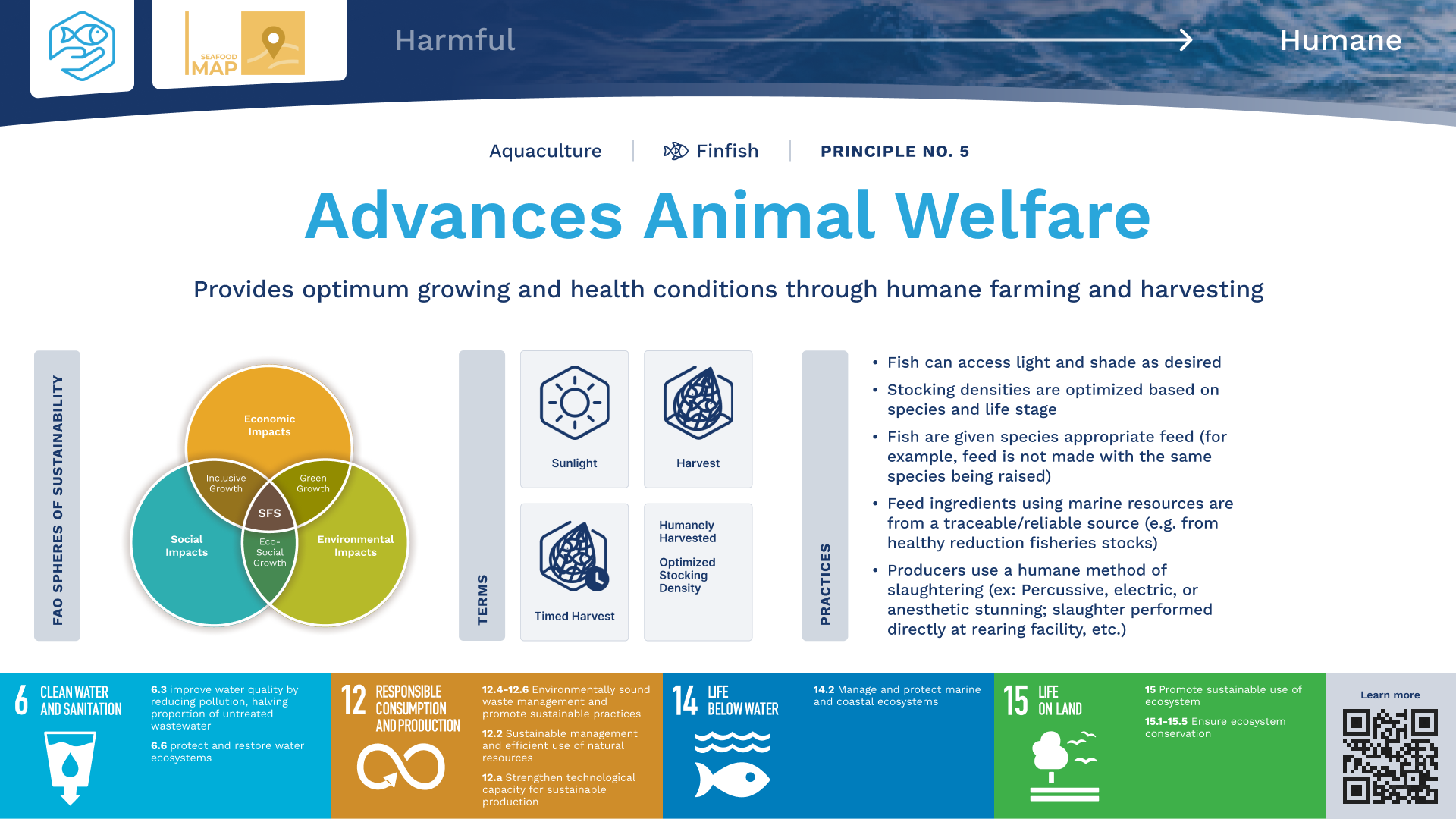Aquaculture – Principle 5 | Seafood MAP
Just as stressing a cow before harvest generates tough flesh, so too does stressing a fish. Not only is welfare important for the final product, but it is important to the well-being and animal happiness. Approximately 100 billion aquatic animals are farmed each year in neglected, sufferable conditions. Until recently there has been little advocacy aimed at improving fish welfare. As aquaculture scales up, welfare policies and innovations must scale too because welfare must be supported. A happier fish means a healthier environment and a safer food source.

Aquatic Life Institute
Key Topics Explained
How can aquaculture be respectful of animal welfare?
Aquatic animal welfare is a highly neglected, yet tractable issue. Approximately 500 billion aquatic animals (fish, shrimp and others) are farmed annually in high-suffering conditions. To date, there is negligible advocacy aimed at improving welfare conditions for these animals.
Research suggests that most adults would like to see information about fish welfare on product labels, but the concept of what constitutes “humane fish” or “high welfare seafood products” is still currently largely undefined by the public, industry, and most governments. The majority of seafood labels, covering 40% of the global seafood market in 2023, also lack adequate animal welfare standards.
It is possible, and necessary, to raise the bar for the aquaculture industry by establishing species-specific standards and stringent regulations in each of the 5 main pillars of aquatic animal welfare:
Several prominent seafood certification schemes have upgraded their animal welfare standards since advocacy endeavors began in 2020, including the Aquaculture Stewardship Council and GlobalG.A.P. Government bodies comprised of influential decision-makers such as the United Nations Food and Agriculture Organization have also incorporated language specific to aquatic animal welfare into their guiding documents. The Aquaculture Certification Schemes Benchmark (2022) is a powerful instrument that has been created, and can be employed to elevate industry norms and practices related to aquatic animal welfare.
Furthermore, by alleviating aquatic animal suffering, we also advance on a number of the UN’s Global Sustainability Goals, including zero hunger (SDG 2), decent work and economic growth (SDG 8), responsible consumption and production (SDG 12), and life below water (SDG 14).
Shifting our mindset and practices to incorporate aquatic animal welfare is achievable and necessary, and swiftly produces wins for people, the planet and animals.

N/A